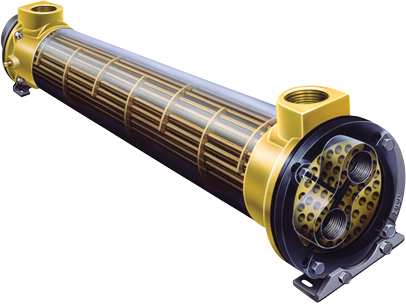Process Heat Transfer Equipment and their Function
Posted by Midnyt Blaze on 00:30 with No comments
Equipment |
Function |
| Chiller | Cools a fluid to a temperature below that obtainable if water only were used as a coolant. It uses a refrigerant such as ammonia or Freon. |
| Condenser | Condenses a vapor or mixture of vapors, either alone or in the presence of a noncondensable gas. |
| Partial condenser | Condenses vapors at a point high enough to provide a temperature difference sufficient to preheat a cold stream of process fluid. This saves heat and eliminates the need for providing a separate preheater (using flame or steam). |
| Final condenser | Condenses the vapors to a final storage temperature of approximately 37.8°C (100°F). It uses water cooling, which means that the transferred heat is lost to the process. |
| Cooler | Cools liquids or gasses by means of water. |
| Exchanger | Performs a double function: (1) heats a cold fluid by (2) using a hot fluid which it cools. None of the transferred heat is lost. |
| Heater | Imparts sensible heat to a liquid or a gas by means of condensing steam or Dowtherm. |
| Reboiler | Connected to the bottom of a fractionating tower, it provides the reboil heat necessary for distillation. The heating medium may be either steam or a hot-process fluid. |
| Thermosiphon reboiler | Natural circulation of the boiling medium is obtained by maintaining sufficient liquid head to provide for circulation. |
| Forced-circulation reboiler | A pump is used to force liquid through the reboiler. |
| Steam generator | Generates steam for use elsewhere in the plant by using the available high-level heat in tar or a heavy oil. |
| Superheater | Heats a vapor above the saturation temperature. |
| Vaporizer | A heater which vaporizes part of the liquid. |
| Waste-heat boiler | Produces steam; similar to steam generator, except that the heating medium is a hot gas or liquid produced in a chemical reaction. |










0 comments:
Post a Comment